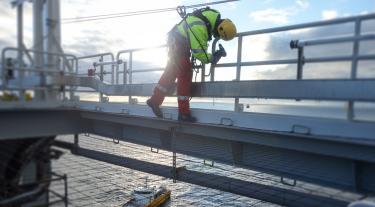The statement covers a lot of ground, building on previous announcements on increased ambition for offshore wind deployment, to the accelerated timeline for the ban of new petrol and diesel cars sales from 2040 to 2030.
We welcome this plan as it sends a strong signal that the UK is committed to a green recovery, creating certainty and lowering the risks and barriers to future investment. However, we recognise that for the UK to meet its net zero goal by 2050, more needs to be done to build on this ambition and unlock more investment.
The plan lays out a list of ten points. But to act upon them requires recognition of their interdependences. For example, offshore wind power (point one) will be one of the key technologies for the generation of low carbon hydrogen through electrolysis (point two), which in turn could be used to power ships (point six).
We would therefore recommend an 11th point – the need to take a whole systems approach. This will ensure we account for the interconnections and take advantage of synergies where they exist. In doing this the UK will reap the economic and environmental benefits of looking at its energy system as a whole and the value of collaboration across sectors and stakeholders.
We need to be smart with the resources we have. The scale and sustained investment requirements mean that the more effective we can be in deploying capital in this critical moment of change, the better.
The UK needs a smart and flexible energy system, one that has the ability to effectively match energy demand and supply. This can be achieved through technologies like demand-side response, energy storage, flexible generation and interconnectors. Our analysis in 2016 highlighted that deploying these technologies delivers significant cost reduction potential – up to £40bn by 2050 – whilst also reducing carbon emissions.
We are currently updating this analysis with a broad cross section of industry to determine the value that energy flexibility can unlock across power, heat and transport sectors to meet net zero by 2050 at lowest cost.
It’s great that the government is progressing with this green agenda, setting up the challenges in the near term. But the strategy behind these ten points will need to be fleshed out as soon as possible. We look forward to learning more over the coming months with the forthcoming Heat and Buildings Strategy, the National Infrastructure Strategy, the much-anticipated Energy White Paper and the Climate Change Committee’s Sixth Carbon Budget next month.
At the Carbon Trust we are committed to supporting the energy transition, and through our upcoming work on energy flexibility and integrated systems development we will be able to provide much needed evidence to enhance decision making at this crucial moment.


